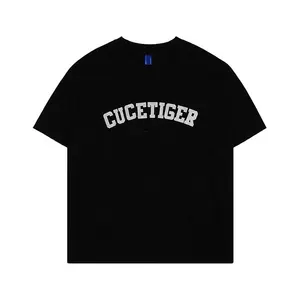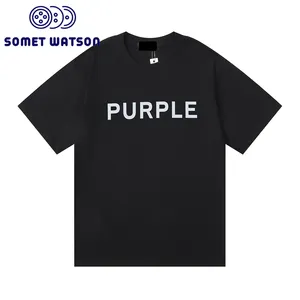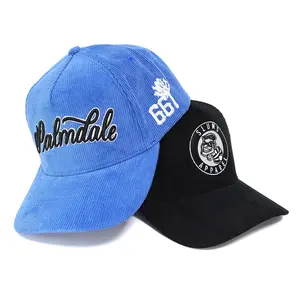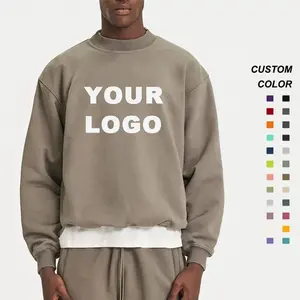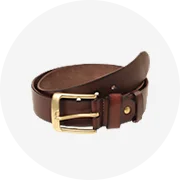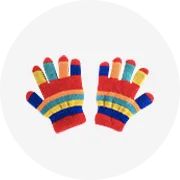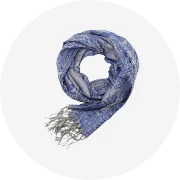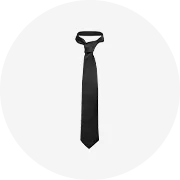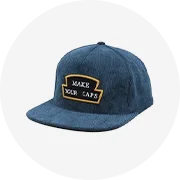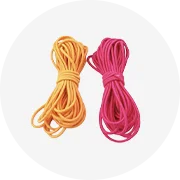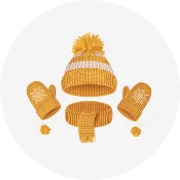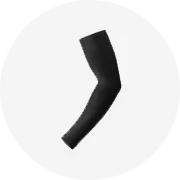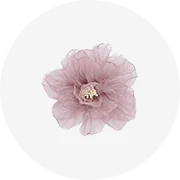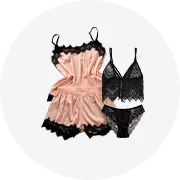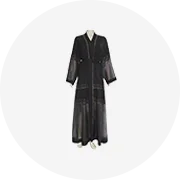Phổ biến trong ngành của bạn

100% Polyester Tricot Dệt Kim Sáng Bóng Đồng Bằng Vải Bán Buôn Nhà Máy Dệt May, Đổ Xô, Liên Kết Đất Tricot Vải
0,16 US$ - 0,18 US$
Đơn hàng tối thiểu: 1 Yard


Nhà máy tùy chỉnh màu tái chế 300D 100% Polyester PVC tráng Ripstop Oxford vải của sân
0,90 US$ - 1,10 US$
Đơn hàng tối thiểu: 1000 Mét


Thiết kế hiện đại sang trọng chất lượng cao 100% polyester bọc vải Holland vải nhung cho rèm và sofa vải
1,10 US$ - 2,00 US$
Đơn hàng tối thiểu: 1 Mét


Bán buôn tái chế giải pháp DOPE nhuộm PU tráng 1000mm 600D Oxford Polyester Oxford vải vải Nhà cung cấp
1,55 US$ - 4,00 US$
Đơn hàng tối thiểu: 2 Mét


3ft x 100ft không dệt vải làm vườn cảnh quan cỏ dại kiểm soát vải
1,52 US$ - 1,80 US$
Đơn hàng tối thiểu: 1000 Kilogram
Vận chuyển mỗi chiếc: 1.002,00 US$


Các Nhà Cung Cấp Trung Quốc 100% Polyester Hồi Giáo Hồi Giáo Bangladesh Tissu Len Đào Abaya Vải Với Màu Đen Chính Thức
1,05 US$ - 1,20 US$
Đơn hàng tối thiểu: 5000 Yard

Áo Thun Hồi Giáo 100% Cotton Cho Nam Chàng Trai Trẻ Em Phụ Nữ Từ Bangladesh
2,00 US$ - 5,00 US$
Đơn hàng tối thiểu: 500 Cái

Chất Lượng Tốt Người Đàn Ông Của T Áo Sơ Mi Thiết Kế Mới Xuất Khẩu Định Hướng 100% Cotton Ngắn Tay Áo Thời Trang Mục Xuất Khẩu Từ Bangladesh
2,00 US$ - 3,00 US$
Đơn hàng tối thiểu: 500 Cái

Áo Thun Đồng Bằng Cổ Tròn Cho Nam, Nhà Cung Cấp Bangladesh Áo Thun Chất Lượng Cao
2,50 US$ - 3,00 US$
Đơn hàng tối thiểu: 500 Cái

Chất Lượng Tốt Nhất Cotton Tùy Chỉnh T Áo Sơ Mi Cho Nam Giới Trống Heavyweight Quá Khổ T Áo Sơ Mi In Ấn Người Đàn Ông Của T-Shirts Trực Tiếp Thực hiện Trong Bd
1,20 US$ - 2,00 US$
Đơn hàng tối thiểu: 200 Cái

T-Shirt Hồi giáo 100% cotton cho nam giới chàng trai trẻ em từ Bangladesh
2,00 US$ - 3,50 US$
Đơn hàng tối thiểu: 300 Cái

Polo Áo Sơ Mi 100% Bông Vải Cho Nam Giới Chàng Trai Trẻ Em Phụ Nữ Từ Bangladesh
6,50 US$ - 8,00 US$
Đơn hàng tối thiểu: 300 Cái
Các tìm kiếm liên quan:

Áo Polo Chất Lượng Cao, Áo Polo Thiết Kế Mới Từ Bangladesh
7,00 US$ - 10,00 US$
Đơn hàng tối thiểu: 500 Cái

Denim Bông Clips Người Mua-Nhà Sản Xuất Bán Buôn, Nhà Phân Phối Và Đại Lý Cho Denim Bông Clips Từ Bangladesh
10,00 US$ - 24,00 US$
Đơn hàng tối thiểu: 26 Tấn

Tốt Nhất Bán Người Đàn Ông Của Phòng Tập Thể Dục T-Shirt Rất Thoải Mái Vải OEM Tùy Chỉnh Thiết Kế Logo In Casual Tee Trực Tiếp Từ Bangladesh
1,30 US$ - 4,50 US$
Đơn hàng tối thiểu: 100 Cái

Vải Làm Sạch Vải Dệt Chất Thải Bán Trực Tiếp Từ Nhà Máy Chất Thải Vải Cotton 100% Cotton Vải Loại A Từ Bangladesh
0,80 US$ - 1,00 US$
Đơn hàng tối thiểu: 1000 Kilogram

Spunlace hóa chất ngoại quan sisal sợi vật liệu không dệt vải trong cuộn cho túi làm trong saudi arabia
1,00 US$ - 1,35 US$
Đơn hàng tối thiểu: 500 Kilogram
Vận chuyển mỗi chiếc: 20,05 US$

Bangladesh Làm Chất Lượng Cao Trong Kho Người Đàn Ông Của In T-Shirts Bán Buôn Mềm Mại Vải Thoáng Khí Nhiều Màu Sắc & Logo T Áo Sơ Mi
1,00 US$ - 1,60 US$
Đơn hàng tối thiểu: 500 Cái

Bán buôn tùy chỉnh cá nhân không dệt túi không dệt Túi máy làm trong Bangladesh Tote Túi PP nhiều lớp không dệt
0,05 US$ - 0,10 US$
Đơn hàng tối thiểu: 1000 Túi
Vận chuyển mỗi chiếc: 0,20 US$

Giá bán buôn vải thoáng khí trong mùa hè chất lượng cao Slim Fit thẳng quá khổ của nam giới quần 100% Twill Chino quần âu
3,20 US$ - 3,99 US$
Đơn hàng tối thiểu: 100 Cái

New máy in kỹ thuật số Bangladesh người mua yêu cầu cho T-Shirts
2,18 US$ - 2,99 US$
Đơn hàng tối thiểu: 5 Cái

Nêm Espadrilles Chất Lượng Cao Nhất Cao Su Đế Ngoài Bông Vải Lót Chất Liệu Espadrilles Cho Phụ Nữ Cho Người Mua Bán Buôn
3,80 US$
Đơn hàng tối thiểu: 1000 Cặp

Top Waffle Heavyweight 250gsm 100% cotton người mua cho vải dệt nguyên liệu cho rèm kỹ thuật số CNC cắt Decal bảng
6.180,00 US$ - 7.980,00 US$
Đơn hàng tối thiểu: 1 Bộ
Vận chuyển mỗi chiếc: 22,78 US$

Made in Bangladesh Chất lượng cao của nam giới Áo Thun Hoodie dài tay áo cotton Fleece vải dệt kim biểu tượng tùy chỉnh của nam giới mùa đông mặc
6,00 US$ - 9,00 US$
Đơn hàng tối thiểu: 100 Cái

OEM Bán Buôn Custom Made Pique Cotton Polo Áo Sơ Mi Từ Bangladesh
7,00 US$ - 10,00 US$
Đơn hàng tối thiểu: 500 Cái

Chất lượng tốt và giá thấp dệt tái chế Kích thước hàng dệt kim bông vải cắt chất thải Nhà cung cấp người mua. Sản xuất tại BD
0,50 US$ - 1,80 US$
Đơn hàng tối thiểu: 300 Kiloôm

Giá Rẻ Giá Bán Buôn Cổ Phiếu Rất Nhiều Trong Bangladesh Mùa Hè Mới Mùa Xuân Trang Phục Cổ T Áo Sơ Mi Với Overrun Mang Nhãn Hiệu còn sót lại Lô Hàng
1,00 US$ - 1,60 US$
Đơn hàng tối thiểu: 500 Cái

Tự Nhiên Và Làm Bằng Tay Cao Su Đế Ngoài Bông Vải Lót Chất Liệu Espadrilles Cho Phụ Nữ Cho Người Mua Bán Buôn
4,20 US$
Đơn hàng tối thiểu: 600 Cặp

Áo Phông Polos Vải 100% Cotton Cho Nam Chàng Trai Trẻ Em Phụ Nữ Từ Bangladesh
7,00 US$ - 10,00 US$
Đơn hàng tối thiểu: 500 Cái

Bán Hàng Chuyên Nghiệp Chất Liệu Vải Bố 100% Cotton Cao Cấp Nhất Làm Bằng Tay Cho Người Mua Số Lượng Lớn
1,75 US$
Đơn hàng tối thiểu: 5000 Cặp

Xuất Khẩu Định Hướng Polo Áo Sơ Mi 100% Cotton Vải Cho Nam Giới Trai Trẻ Em Phụ Nữ Từ Bangladesh 100 Cotton Mens Golf Polo Áo Sơ Mi Polo
5,00 US$ - 6,00 US$
Đơn hàng tối thiểu: 300 Cái

Có Uy Tín Bangladesh Nguồn Gốc Bán Buôn Của Giày Đế Bện Thời Trang Cho Người Mua Số Lượng Lớn
1,80 US$ - 7,00 US$
Đơn hàng tối thiểu: 600 Cặp

Bán Buôn Polo Áo Sơ Mi 100% Cotton Vải Cho Nam Giới Trai Trẻ Em Phụ Nữ Từ Bangladesh
7,00 US$ - 10,00 US$
Đơn hàng tối thiểu: 500 Cái

Bán Buôn Polo Áo Sơ Mi 100% Cotton Vải Cho Nam Giới Trai Trẻ Em Phụ Nữ Từ Bangladesh
7,00 US$ - 10,00 US$
Đơn hàng tối thiểu: 500 Cái

Xuất Khẩu Định Hướng Polo Áo Sơ Mi 100% Cotton Vải Cho Nam Giới Trai Trẻ Em Phụ Nữ Từ Bangladesh
7,00 US$ - 10,00 US$
Đơn hàng tối thiểu: 500 Cái

Bán Buôn Polo Áo Sơ Mi 100% Vải Polyester Cho Nam Giới Trai Trẻ Em Phụ Nữ Từ Bangladesh
7,00 US$ - 10,00 US$
Đơn hàng tối thiểu: 500 Cái

Xuất Khẩu Định Hướng T-shirt Hồi Giáo 100% Cotton Cho Nam Giới Chàng Trai Trẻ Em Phụ Nữ Từ Bangladesh
2,00 US$ - 5,00 US$
Đơn hàng tối thiểu: 500 Cái

Áo Thun Nam 100% Cotton Từ Bangladesh Áo Thun Nam Giản Dị Polyester / Cotton OEM 100% Cotton Áo Phông Custom Made Size Jersey
3,00 US$ - 5,00 US$
Đơn hàng tối thiểu: 500 Cái

Áo Thun Polo 100% Cotton Từ Bangladesh Áo Thun Nam Polo Thiết Kế Tùy Chỉnh Chất Lượng Cao Cổ Tròn Người Đàn Ông Phong Cách Biểu Tượng Tùy Chỉnh Người Đàn Ông
6,00 US$ - 9,00 US$
Đơn hàng tối thiểu: 300 Cái

Áo Thun Hồi Giáo 100% Cotton Cho Nam Chàng Trai Trẻ Em Phụ Nữ Từ Bangladesh Đàn Ông
2,00 US$ - 5,00 US$
Đơn hàng tối thiểu: 500 Cái
Các danh mục hàng đầu
Giới thiệu về vải người mua ở bangladesh
Alibaba.com cung cấp các sản phẩm 382 vải người mua ở bangladesh. Có rất nhiều vải người mua ở bangladesh lựa chọn dành cho bạn, chẳng hạn như thoáng khí, không thấm nước, và bền. Bạn cũng có thể chọn từ bìa, may mặc, và ăn mặc vải người mua ở bangladesh. Cũng như từ màu xanh, trắng, và đen vải người mua ở bangladesh.Và bất kể vải người mua ở bangladesh là người phụ nữ, cô gái, hay người đàn ông.

